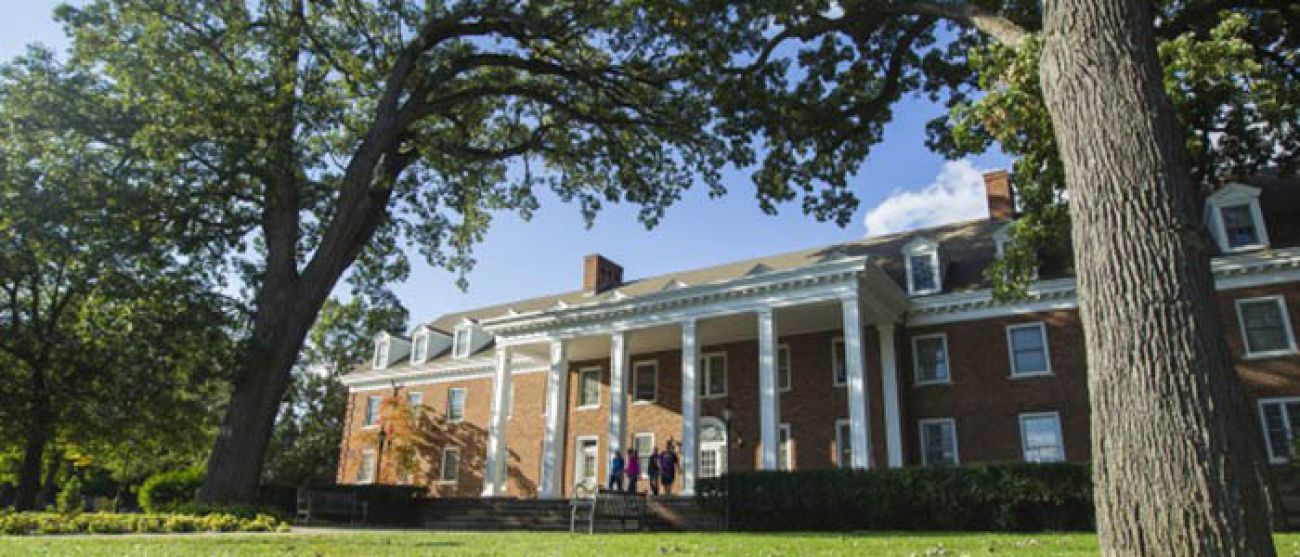How more affluent families get welfare for pricey private colleges

Albion College is one of the most expensive private schools in Michigan and many of its students come from families of means.
On the surface, it would appear the liberal arts students at Albion would have little in common with those living in the poor neighborhood that surrounds the school, where a third of residents live in poverty.
Yet they do, and most students are likely unaware of this stunning fact: A greater percentage of Albion students are receiving federal welfare money than those in the neighborhood surrounding the campus.
At Albion, 63 percent of in-state students receive a Michigan Competitive Scholarship or a Michigan Tuition Grant, college aid the students themselves might be surprised to learn is funded almost entirely with federal anti-poverty money. This at a college in which the median family income of students receiving financial aid is nearly $76,000.
That rate is also more than double the percentage of Albion students who were awarded a Pell Grant in the 2013-14 school year, which go to U.S. college students coming from the poorest of family backgrounds.
The use of federal welfare money to help more financially comfortable Michigan students attend pricey private schools is hardly confined to Albion.
Two-thirds of Michigan students at Calvin College benefit from welfare funds, even though the median family income of Calvin students getting financial aid is $85,000. Similar numbers emerge at Alma, Kettering, Hope, Olivet and other expensive schools.
In all, Michigan spends about $100 million annually in welfare money from Washington on college aid, including millions that benefit families earning over $100,000. This in a state in which only 18 of every 100 families living in poverty are receiving cash assistance.
How we got here
How Michigan came to redirect welfare money, known officially as Temporary Assistance for Needy Families, or TANF, to help pay the tuition at expensive, private schools has its roots in two seismic events of the recent past. First, welfare reform, passed during the Clinton Administration 20 years ago, which gave states broad discretion in distributing anti-poverty funds. Second, the great recession of 2008, which led Lansing to divert tens of millions of dollars in anti-poverty money to student aid.
But after a decade in which Michigan has slashed cash assistance to the poor, some question the state’s generous approach to funding student aid with welfare money.
“We shouldn’t be paying for financial aid for upper-income students with money that should be going toward making a more robust safety net for poor people,” said Peter Ruark, senior policy analyst for the Michigan League for Public Policy, a nonpartisan Lansing-based group that advocates for the poor, which gathered income data on families obtaining welfare aid.
All told, Michigan has spent a billion dollars in federal welfare money since 2007 on scholarship programs for college students, many at private colleges where annual tuition can exceed $40,000. About 60 percent of students who get the aid come from families with incomes above $50,000.
At the same time, the state has cut TANF spending that goes directly to cash assistance for the poor by over $500 million.
Under the Clinton-era welfare reform, intended to get families off government assistance and into jobs, states were given broad leeway in allocating federal money for the poor, but it is not unrestricted. States must show they are directing the money to programs that fulfill one of four aims:
- Helping needy families
- Getting recipients into jobs
- Reducing out-of-wedlock pregnancies
- Encouraging two-parent families.
And if you were to guess which category Michigan cited to redirect welfare money to college aid, you might well guess wrong.
The state justified the switch by saying that college aid helps prevent out-of-wedlock pregnancies. The rationale: If students are in college, they’re less likely to experience an unplanned pregnancy.
Many in Lansing acknowledge that the optics of using welfare money for middle-class students at more expensive colleges is striking, and advocate uncoupling the two. But to do so now, some say, will require more money -- money that may be hard to find in Lansing as education advocates push for even more funding – on top of the $100 million that includes TANF money – for college student aid.
“To my knowledge there’s not a spare $250 million sitting around to make a significant increase in student financial aid,” said Robert Lefevre, president of the Michigan Independent Colleges and Universities, a 25-school group whose members include Albion College.
Kurt Weiss, spokesman for Gov. Rick Snyder’s State Budget Office, said there are no current plans to revisit how Michigan distributes anti-poverty funds to students from more affluent families attending expensive private schools.
But Weiss added in an email that the administration is “certainly open to discussing this issue and looking at the best ways to meet the needs of Michigan’s children and families. As you know, there are many demands on General Fund spending, and the General Fund pie is only so big.”
Middle-class benefits
Students of middle and upper-income families are able to qualify in part because the aid programs consider family need in the context of the price tag of the school their children wish to attend. And many of the state’s private colleges are more expensive than public schools.
More than 50,000 Michigan students annually are getting scholarships backed by TANF. At Olivet College in Olivet, nearly 85 percent of students received a welfare-backed scholarship or grant; at Hope College in Holland, where the median family income of students getting financial aid was over $86,000 in 2013, more than half of its in-state students got TANF-backed aid, even though only 20 percent of Hope students were awarded a Pell Grant.
The situation is markedly different at Michigan’s public universities, where the award of TANF-based aid is more aligned with student poverty levels.
In-state students attending Michigan’s 15 public universities are only eligible for the Michigan Competitive Scholarship, which has required a student to have scored at least a 23 on the ACT college admission test. (For graduates in 2017 and beyond, the ACT score will not be considered; students will have to have at least a 1200 on the SAT).
At nearly every public university, the proportion of students awarded a Pell Grant exceeded that of students earning a Michigan Competitive Scholarship.
At Michigan State, for instance, just under 20 percent of in-state students got MCS aid, while 23 percent of students were awarded a Pell Grant. At Western Michigan, just 7 percent of in-state students got an MCS while nearly 40 percent were awarded a Pell Grant.
The 2007 dilemma
What prompted the funneling of welfare money into college aid? The strangling economics of the Great Recession, which the administration of then-Gov. Jennifer Granholm determined needed a creative fix.
Back in 2007, as the state was scrambling to make up huge deficits, budget officials realized the state could lose tens of millions dollars in TANF funds because of how Michigan was spending the federal money. The feds didn’t want Michigan, or any state, to use federal welfare money to replace each state’s own obligations to the poor. So states had to show they too were putting in a certain amount of funds annually for needy families.
So budget officials had an idea: Take general fund money that was already going to scholarships and put it in the Department of Health and Human Services budget, where TANF lived, to “maintain” state funding levels as required by the feds. Then use TANF money that was already in the DHHS budget to plug the now-gaping hole in financial aid and call it “pregnancy prevention.”
It would look like state funding in DHHS has actually increased, with TANF money now shifted to another approved category for needy families – pregnancy prevention. It was a classic bureaucratic shell game -- neither fund lost a penny and the budget crisis was averted.
And the feds were fine with the switch, in part because welfare reform encouraged states to think more creatively. Indeed, other states also found inventive ways to spend that money.
But what started as a quick-fix became a permanent fixture of the state budget. In the upcoming fiscal year, more than $98 million in federal welfare money will be spent on college scholarships.
Lefevre, of the independent colleges organization, acknowledged that the budget fix that put TANF money in students’ aid packages was a “bad fit.”
“Ten years later, should we still be doing it? I think the answer is no. But we still have the (funding) problems.”
Marketplace, a national public radio program, analyzed federal data and concluded that Michigan is one of just eight states that spends less than 25 percent of its TANF money on those areas at the core of the “welfare-to-work” reform package of 1996: cash assistance to struggling families, work support and child care. And much of what Michigan spent on pregnancy prevention was for college financial aid.
TANF-based scholarships are now an accepted part of the education landscape, from the least expensive public universities to the most costly of private institutions. And those who push Lansing to boost state higher-education funding contend that Michigan needs more money for scholarships and grants, not less. The state now ranks 30th in need-based funding.
A proposed solution
That puts people like Brandy Johnson, executive director of the Michigan College Access Network, which advocates for making college more accessible and affordable, particularly to low-income students and students of color, in a position of advocating that TANF money stay in the college-aid budget, in part because of the state’s strapped resources.
“There’s no better use of those funds to help needy families” escape the cycle of poverty, Johnson said.
But she offered a caveat: Set the “needs” threshold so that the college money stays with low-and middle-income families, putting a family median-income cap of perhaps $60,000 to $75,000 on TANF-backed grants.
Ruark, of the Michigan League, said he too does not want the state to take steps that would reduce financial aid. He wants the state to help both students and the poor.
“We certainly would not want to see financial aid reduced,” Ruark said. “What we really do want to see is low-income people and families prioritized in the budget.”
He said one of the best ways to help the poor is to increase direct cash assistance to poor families. It helps pay rent for those not eligible for subsidized housing, and it can help with transportation, he said.
Yet the number of Michigan residents receiving cash aid has fallen by more than two-thirds since 2011. In 2015, the most recent year available, an estimated 16 percent of Michigan residents lived below the poverty line.
Welfare recipients can get up to $492 a month in cash aid but the number of state-funded recipients fell to about 13,000 in 2016, down from 45,500 in the 2011 fiscal year, as the state tried to recover from the recession and following a law enacted in 2007 that put a four-year time limit on welfare benefits.
“Right now we have by far the lowest caseload since the Kennedy Administration,” Ruark said. If the TANF money now dedicated to student aid went toward cash assistance, it could help another 16,600 people in the state for a full year.
Ruark and others say the decision to divert welfare funds to college aid needs to be revisited. Weiss, the governor’s spokesman, said Snyder is open to that conversation. Finding the will – and the money--- may be harder.
“We’re now past the recession. We should be using general fund dollars for (financial aid),” said State Rep. Sam Singh, D-East Lansing. “We need to have a conversation how we use TANF dollars and use them effectively.”
Michigan Education Watch
Michigan Education Watch is made possible by generous financial support from:
Subscribe to Michigan Education Watch
See what new members are saying about why they donated to Bridge Michigan:
- “In order for this information to be accurate and unbiased it must be underwritten by its readers, not by special interests.” - Larry S.
- “Not many other media sources report on the topics Bridge does.” - Susan B.
- “Your journalism is outstanding and rare these days.” - Mark S.
If you want to ensure the future of nonpartisan, nonprofit Michigan journalism, please become a member today. You, too, will be asked why you donated and maybe we'll feature your quote next time!





